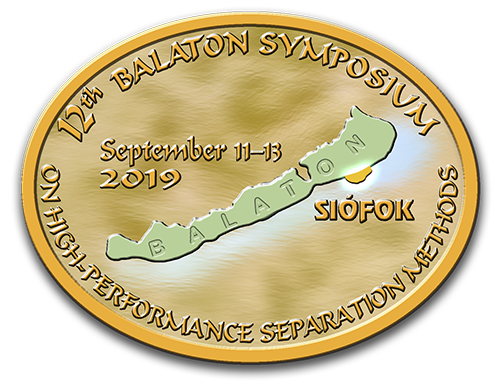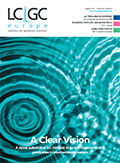The 12th Balaton Symposium on High-Performance Separation Methods
The 12th Balaton Symposium on High‑Performance Separation Methods will be held 11–13 September 2019 in the Hotel Azúr in Siófok, Hungary.

The 12th Balaton Symposium on HighâPerformance Separation Methods will be held 11–13 September 2019 in the Hotel Azúr in Siófok, Hungary. The Balaton Symposia series has evolved into one of the major separation science events in Europe. Biannually, the Balaton Symposium brings together separation scientists and friends from all over the world.
The aim of the 12th Balaton Symposium is to provide a forum for scientists, experts, users, and decision makers of high-performance separation methods to discuss the latest issues, current requirements, and technological challenges we face in the present and future. Focusing on various analytical, preparative, and industrial separation methods and techniques, the symposium will place special emphasis on new developments in pharmaceutical, environmental, biomedical, forensic, life, food, refinery sciences, and industrial separation methods. Research trends on various stationary phases and column technology, advances in separation techniques, and fundamentals of separation science and applications will also be emphasized.
The scientific programme includes plenary lectures, keynote lectures, contributed lectures, and posters.
The confirmed invited speakers include:
- Boguslaw Buszewski, Nicolaus Copernicus University, Torun, Poland
- Gert Desmet, Vrije Universiteit Brussel, Brussels, Belgium
- Sabine Heinisch, University of Lyon, Lyon, France
- Gérard Hopfgartner, University of Geneva, Geneva, Switzerland
- Caroline West, University of Orléans, Orléans, France
- Jean-Luc Veuthey, University of Geneva, Geneva, Switzerland
- Koji Otsuka, Kyoto University, Kyoto, Japan
- David McCalley, University of the West of England, Bristol, UK
- Wolfgang Lindner, University of Vienna, Vienna, Austria
The attendance of young scientists is encouraged via travel grants. Attractive social events will accompany the scientific programme.
Prominent separation scientists will be honoured at the event with one of three prestigious awards named in honour of pioneers of the field. The Halász Medal Award, the Csaba Horváth Memorial Award, and the Ervin sz. Kováts Award for Young Scientists will be presented during the opening ceremony of the symposium.
An exhibition of instrumentation, columns, accessories, chemicals, and literature on various separation techniques is planned in connection with the symposium.
The venue of the symposium, exhibition, and social programme is the Hotel Azúr located by Lake Balaton, which is the largest lake in Central Europe. Since Hungary is landlocked, Balaton is sometimes called the “Hungarian Sea”. High tourist season extends from June until the end of August. The average water temperature during the summer is 25 °C, which makes bathing and swimming very enjoyable. The distance between the Budapest-Liszt Ferenc International Airport and Siófok is only 130 km on highway M7. Siófok can also be reached conveniently by train.

New Study Reviews Chromatography Methods for Flavonoid Analysis
April 21st 2025Flavonoids are widely used metabolites that carry out various functions in different industries, such as food and cosmetics. Detecting, separating, and quantifying them in fruit species can be a complicated process.
Quantifying Terpenes in Hydrodistilled Cannabis sativa Essential Oil with GC-MS
April 21st 2025A recent study conducted at the University of Georgia, (Athens, Georgia) presented a validated method for quantifying 18 terpenes in Cannabis sativa essential oil, extracted via hydrodistillation. The method, utilizing gas chromatography–mass spectrometry (GC–MS) with selected ion monitoring (SIM), includes using internal standards (n-tridecane and octadecane) for accurate analysis, with key validation parameters—such as specificity, accuracy, precision, and detection limits—thoroughly assessed. LCGC International spoke to Noelle Joy of the University of Georgia, corresponding author of this paper discussing the method, about its creation and benefits it offers the analytical community.










